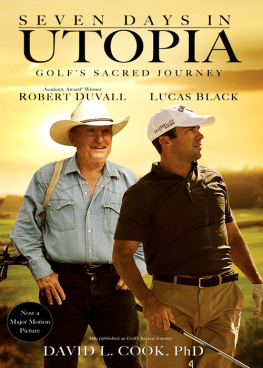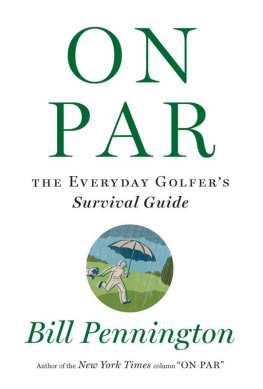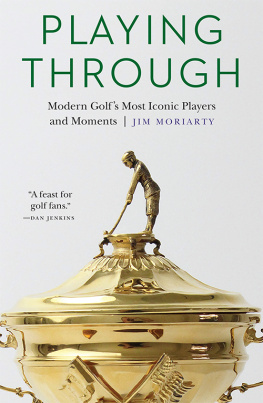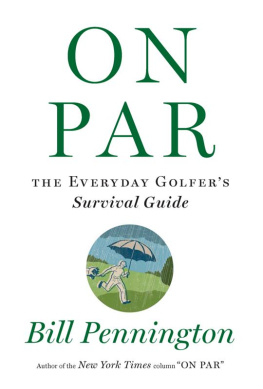Contents
Guide
A VID R EADER P RESS
An Imprint of Simon & Schuster, Inc.
1230 Avenue of the Americas
New York, NY 10020
www.SimonandSchuster.com
Copyright 2020 by Brett Cyrgalis
All rights reserved, including the right to reproduce this book or portions thereof in any form whatsoever. For information, address Avid Reader Press Subsidiary Rights Department, 1230 Avenue of the Americas, New York, NY 10020.
First Avid Reader Press hardcover edition May 2020
AVID READER PRESS and colophon are trademarks of Simon & Schuster, Inc.
For information about special discounts for bulk purchases, please contact Simon & Schuster Special Sales at 1-866-506-1949 or .
The Simon & Schuster Speakers Bureau can bring authors to your live event. For more information or to book an event, contact the Simon & Schuster Speakers Bureau at 1-866-248-3049 or visit our website at www.simonspeakers.com.
Interior design by Ruth Lee-Mui
Jacket design by Alex Merto
Jacket photograph by Bill Truran/Alamy Stock Photo
Author photograph by Ray Cyrgalis
Library of Congress Cataloging-in-Publication Data is available.
ISBN 978-1-4767-0759-4
ISBN 978-1-4767-0761-7 (ebook)
To Claire
The most beautiful experience we can have is the mysterious. It is the fundamental emotion which stands at the cradle of true art and true science.
Albert Einstein, 1931
PROLOGUE NEW JERSEY
P ut your hand high behind your head. Wiggle your fingers. Now look up and see how close your hand is to where you thought it was.
Knowing the whereabouts of your body parts is called proprioception, and were all different levels of bad at it. Maybe your proprioception is better than your neighbors, but when you get into positions that you are not familiar with, you will lose a large sense of where you are.
I learned this phenomenon from Skip Latella, who shocked me with what he said while giving a presentation at a golf outing. Latella was supporting a female golfer standing on hard rubber balloons called Flexor discs. As she stood there, he helped her back into a motion like the golf swing, and he said something that sounded entirely out of place:
See, standing on the discs creates static electricity. That static electricity opens the neurotransmitters in your brain. Coupled with the innervating of deep muscle tissue, the communication between the body and brain is more open, and youre relearning a complex motor function. He paused and raised his hands. Youre teaching your brain and body subconsciously.
Because proprioception is so flawed, consciously telling your body what to do in any precise manner is a flawed way of changing motor patterns. Try to take a golf club back and then explain where your hands are. You know what your swing feels like to you, but thats almost never the reality of the situation, especially during a quick and complicated motion. If you know what Tiger Woodss swing looks likefor the sake of this argument, lets say his swing circa 2000, the specifics and timelines of which we will get into with much detail laterwhy cant you just do that? Its because you have no idea how to tell your body how to do that. Its like trying to tell a calculator to launch a rocket.
My goal was to learn how the body moves in relation to its neurophysiological limitations, Latella said later. Im just trying to max out everyones potential.
By doing that, Latella was trying to bypass the conscious mind. Yet wasnt the entire history of golf instructionreally, the entire history of educationbased on the conscious mind? Didnt all teachers give verbal directions to their students, then ask the students to execute those directions?
Is this where science has taken the game?
Are there any big-name teachers that use this? I asked.
Latella stopped and thought for a minute.
You know who gets it? he finally said. David Glenz.
I called Glenz at his academy, which at the time was located within a sprawling place in the Kittatinny Mountains of northwestern New Jersey called Black Bear Golf Club, part of the Crystal Springs Resort. His voice was raspy and soft, with a tinge of what I would come to learn was Oregonian twang. He had taught some great players in his time, evidenced by Golf Digest naming him National Teacher of the Year in 1998.
I told him about my conversation with Latella, and Glenz listened intently. I said I would love to watch him teach with the Flexor discs, then sit down and talk about how golf instruction has changed.
Well, Glenz said, theres a conflict when you teach golf trying to use conscious information.
I didnt know a teacher could say something like that. Didnt that statement undercut an entire industry?
When I arrived at the academy a few days later, it was a sweltering-hot day in June, with little breeze and few clouds. It smelled wonderfully of earth. Glenz was there with his student Mike DeFazio. He was thirty-seven years old, in good shape, and carried a seven handicap; he could probably have been better if he hadnt had back surgery six months prior. He said he used to be a pro bowler, but now worked as a contractor.
DeFazio was balancing himself on the Flexor discs, and his clubs were scattered behind him on the ground. His first three months of lessons were just like this, but Glenz never explained the science behind the discs. After DeFazio stepped off, he hit a midiron pure and straight. Turning to me, he said that the discs werent there to help people repeat the swing, but to help with muscle memory and balance.
Later I told Glenz about his students self-conflicting response. Glenz smirked and then lit a Marlboro Red. As he thought, he let the smoke exit through his nostrils.
The trick isthats the real teaching part, Glenz said. Anybody can look at video and say, Youre here, you should be there. But how do you make your body change in order to have the golf ball perform?
Then I walked about a hundred paces down the range and met Henry Ellison, which is when things started to get really weird.
When I first saw Ellison, he was teaching golf six inches from a students face. Later, when I was the student, it was impossible not to notice the graying of his five-oclock shadow and the white lines around his lips that said this man needed a drink of water an hour agobut the thought hadnt even crossed his mind.
He spoke in platitudes, in self-made proverbs, and the passion with which he conveyed these ideas was infectious. His voice would rise in pitch and volume at the end of every statement, plumbing for a connection.
Do you understand? he would say often. Do you really understand?
On that first day, Ellison was talking to Robert Adelman, fifty-six, from the wealthy suburb of Scarsdale, New York. He had begun playing with his teenage daughter, who quickly grew better than him and quickly grew embarrassed by how bad her dad was.
Frustrated, Adelman was on the verge of quitting the game. But just for the sake of thoroughness, he figured he would give one last teacher a try before giving it up for good. His close friend Dan had taken lessons from Ellison for yearsas long as I can remember, said Dan, an aloof single-digit-handicapper with a strange and distant smile. Dan was there just to watch from under his wide-brimmed straw hat, not giving a last name or hometown or any sense of his feet being on the ground. I shouldve realized then that I was treading into strange waters.












